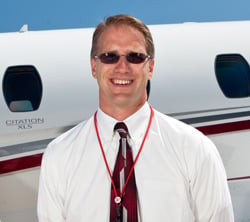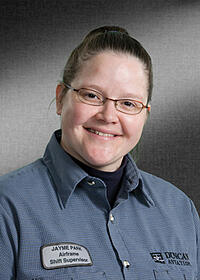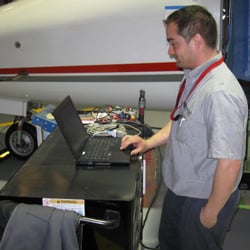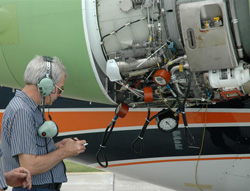Simplifying A Puzzle of Complexity
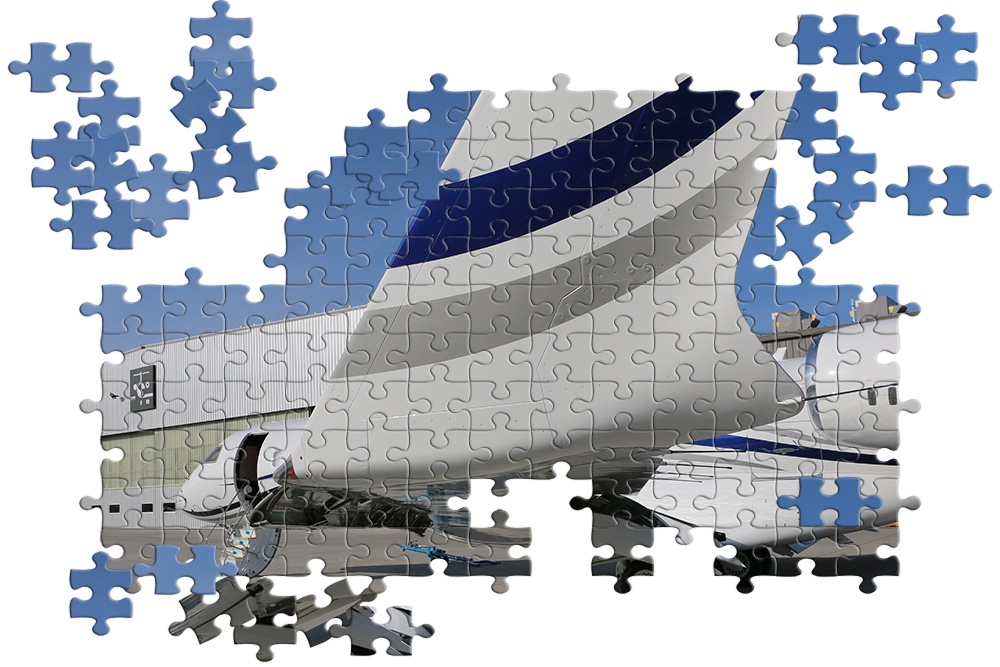 Ever put together a 1,000 piece puzzle? How about one with no straight-edges or picture on the box? What if you only had a couple of hours to finish and the pieces kept changing shape? Sounds a little daunting, if not impossible doesn’t it. Yet this is a daily scenario at Duncan Aviation.
Ever put together a 1,000 piece puzzle? How about one with no straight-edges or picture on the box? What if you only had a couple of hours to finish and the pieces kept changing shape? Sounds a little daunting, if not impossible doesn’t it. Yet this is a daily scenario at Duncan Aviation.
Getting Downtime…Down
Operations Planning Coordinators, Brian Barto, Doug Schmitt, and Jason Kinnan have the difficult job of identifying and pulling together all the loose pieces of every aircraft maintenance event at our Battle Creek, MI, Lincoln, NE, and Provo, UT, facilities to determine an appropriate downtime. On any given day, they may have 35-40 schedules to plan.
They are only able to do this with the help of a very skilled team members who are aware of every shop’s maintenance capabilities and the capacity of work that can be expected. They communicate directly with Project Managers, Team Leaders, and Tech Reps.
They know the work required, the manpower necessary, and the time needed to satisfy the customer’s need for the shortest downtime, while maintaining the quality of work they expect from us.
Read more Duncan Aviation Airframe Maintenance
Hitting the Ground Running
Because of the hard work these teams do prior to every customer’s arrival, all the factory-trained technicians assigned are knowledgeable and well-prepared to begin work immediately upon touchdown with all necessary tools and parts assembled. This is a result of hours of team members being in constant communication with each other, making sure that all work is done in the most efficient time, with no overlaps and minimal interruptions.
“We are very aware that downtime is of high importance to customers. That makes it a high priority to us, as well,” says Shawn Busby, Project Manager. “Because we are a full-service maintenance facility, we have the advantage of doing all that is required under one roof in the shortest amount of time. It also requires a higher level of communication and teamwork so we are able to reduce downtime, increase efficiency and save our customers money.”
Read more Duncan Aviation Avionics Install
Unmatched
“Our engine capabilities are so inclusive that other FBO operations use Duncan Aviation engine team members to support them,” said Mike Bernholtz, Turbine Engine Service Sales Rep. “It is difficult for them to match our expertise, capabilities and downtime with our factory authorizations for Honeywell TFE731, HTF7000 and APUs; Pratt & Whitney 300 series, 500 series, 600 series, JT15, and PT6; Williams International and General Electric CF34.”
Read more Duncan Aviation Turbine Engine Services
You Get What You Pay For
We understand that budgets are tight and you want the best value, but don’t mistake the lowest price tag as your best option. When it comes to considering an MRO for aircraft paint or interior refurbishment work, you really do get what you pay for. “We have seen customers go with the lowest offer in order to save money. But end up having to pay more for services their chosen facilities are incapable of providing,” says Suzanne Hawes, Completions Sales Rep.
Read more Duncan Aviation Interior Completions
“In the case of hidden damage and corrosion, if the low-cost service provider does not have engineering and structural capabilities, the customer ends up having to hire a separate engineering consultant to assess the damage. And potentially even a third facility to do the structural repairs..
At Duncan Aviation we have the experience, that if the damage is beyond tolerance, we work directly with the OEMs to create a repair disposition and have a structures team able to complete the repairs in-house.
Read more Duncan Aviation Aircraft Paint Services
We Have Anticipated Your Needs
There is no simple solution to keeping an aircraft airworthy. The regularly scheduled maintenance events and those that are not expected all add to the cost of doing business by air. As an aircraft operator as well as a service provider, Duncan Aviation understands the daily complexities and has already anticipated your needs before you have.
We make it our business to take the complicated puzzle of aircraft operation and ownership and make it as simple as possible for you.
The best and most economic choice for maintenance events, all the time, every time, is Duncan Aviation. The years of experience and the long list of capabilities at all of our facilities has proven that when we promise to do a job, we are promising to deliver on time, at a fair price, and with the highest quality of work.
This isn’t a random guess disguised as a promise; it is the expert opinion of team members who make it their job to know.
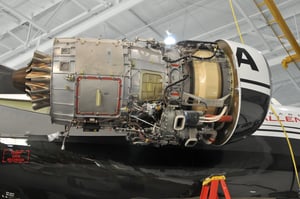 Honeywell has released SB (Service Bulletin) AS 907-76-9021 Rev 0 dated May 13, 2016, regarding the possibility of water entering the ECUs (Electronic Control Unit) after the aircraft is parked in the rain for an extended length of time. This may lead to unscheduled maintenance and expense, aircraft dispatch delays, Loss of Thrust Control (LOTC) events and the possibility for inflight shut downs.
Honeywell has released SB (Service Bulletin) AS 907-76-9021 Rev 0 dated May 13, 2016, regarding the possibility of water entering the ECUs (Electronic Control Unit) after the aircraft is parked in the rain for an extended length of time. This may lead to unscheduled maintenance and expense, aircraft dispatch delays, Loss of Thrust Control (LOTC) events and the possibility for inflight shut downs.


 Ever put together a 1,000 piece puzzle? How about one with no straight-edges or picture on the box? What if you only had a couple of hours to finish and the pieces kept changing shape? Sounds a little daunting, if not impossible doesn’t it. Yet this is a daily scenario at Duncan Aviation.
Ever put together a 1,000 piece puzzle? How about one with no straight-edges or picture on the box? What if you only had a couple of hours to finish and the pieces kept changing shape? Sounds a little daunting, if not impossible doesn’t it. Yet this is a daily scenario at Duncan Aviation. That screwdriver that mysteriously went missing from the toolbox, a scrap of wire or a pack of Lifesavers might not look threatening. But as any A&P Tech will tell you, anything that’s somewhere it doesn’t belong sets the stage for a potentially dangerous situation. Such objects are known as FOD, and Duncan Aviation’s technicians are finding more of them more frequently.
That screwdriver that mysteriously went missing from the toolbox, a scrap of wire or a pack of Lifesavers might not look threatening. But as any A&P Tech will tell you, anything that’s somewhere it doesn’t belong sets the stage for a potentially dangerous situation. Such objects are known as FOD, and Duncan Aviation’s technicians are finding more of them more frequently.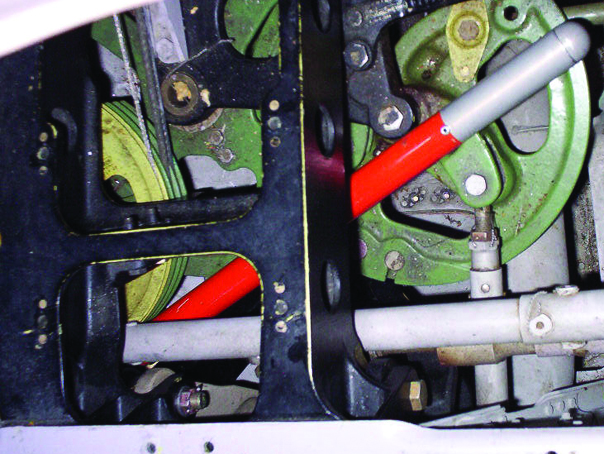 Duncan Aviation's technicians found this red Auxiliary Gear Handle (which belongs to the aircraft) sitting on top of the flight control pulleys.
Duncan Aviation's technicians found this red Auxiliary Gear Handle (which belongs to the aircraft) sitting on top of the flight control pulleys.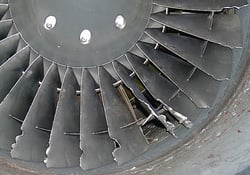
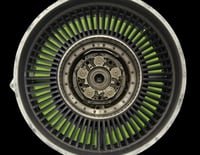 In The Beginning...
In The Beginning... Today, Airesearch is now Honeywell and Duncan Aviation Engine Services has grown to include 73 licensed factory-trained turbine engine technicians working two shifts to provide line maintenance, MPIs, AOG road services and technical expertise, in support of Honeywell, Pratt & Whitney, Rolls Royce and Williams International aircraft turbine engines.
Today, Airesearch is now Honeywell and Duncan Aviation Engine Services has grown to include 73 licensed factory-trained turbine engine technicians working two shifts to provide line maintenance, MPIs, AOG road services and technical expertise, in support of Honeywell, Pratt & Whitney, Rolls Royce and Williams International aircraft turbine engines.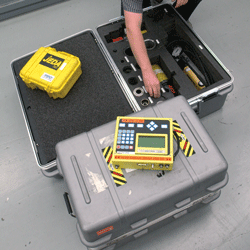 Duncan Aviation’s
Duncan Aviation’s 
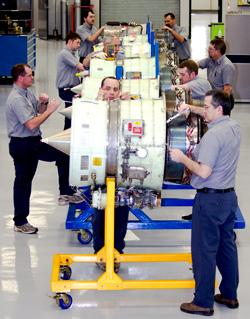
jpg.jpg)
.jpg)
